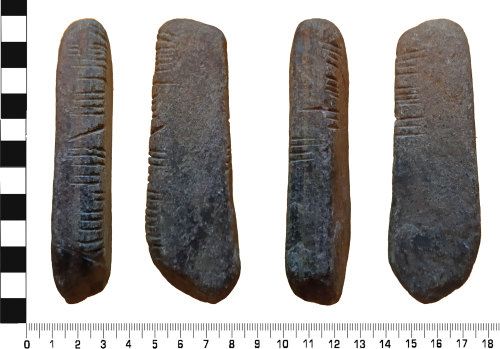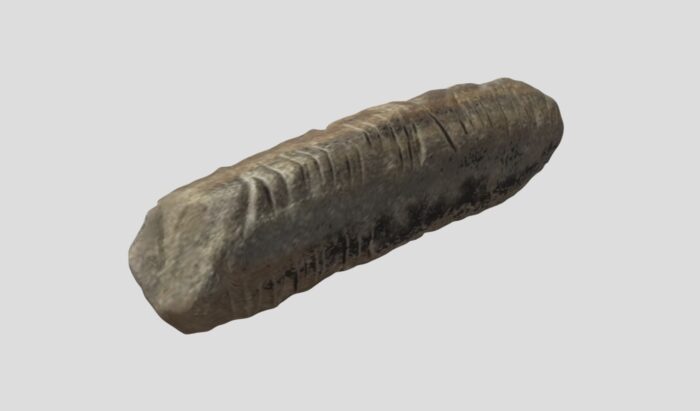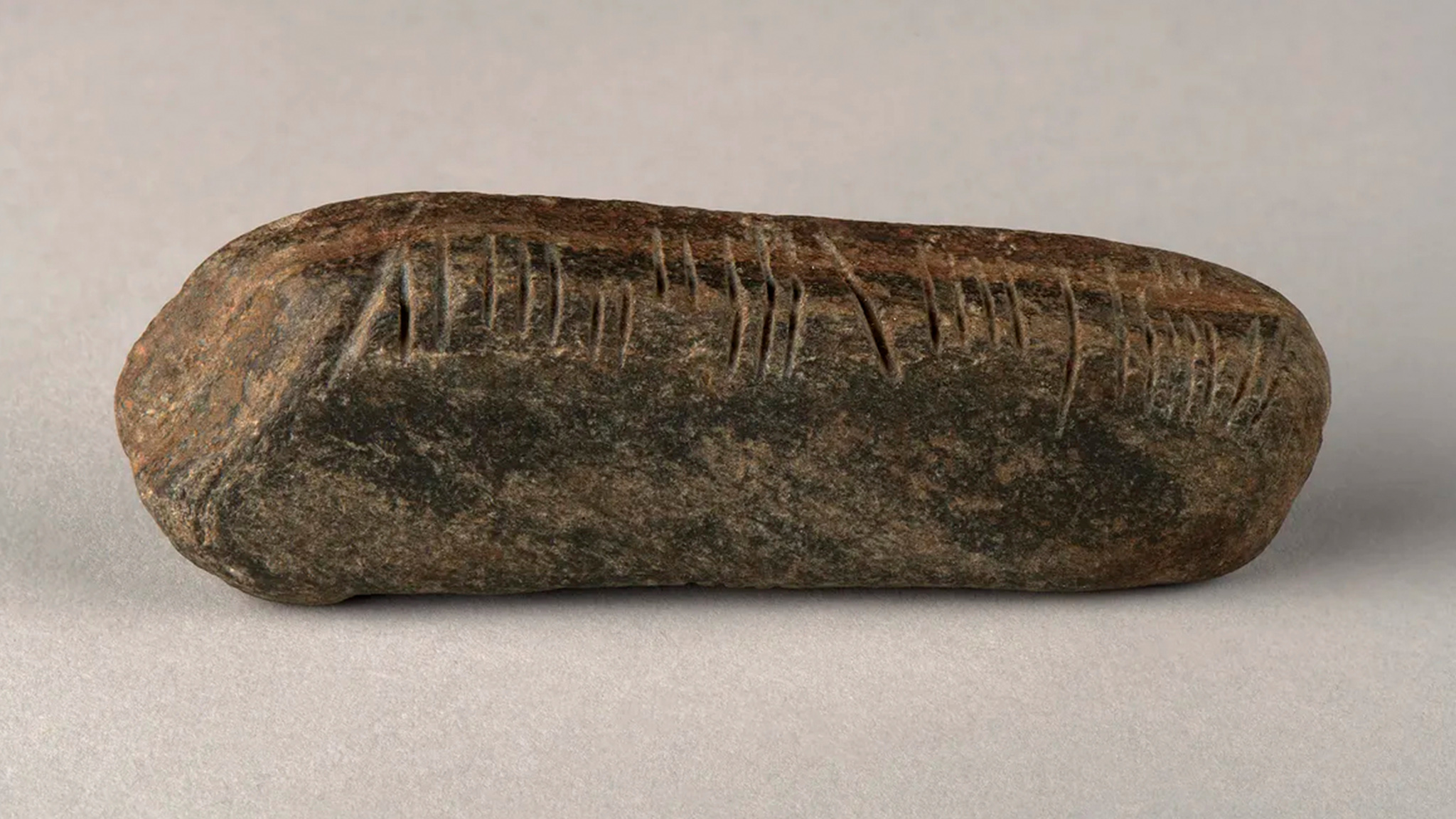The peak of the COVID-19 epidemic is rightly remembered as a stressful, confusing time that caused a lot of heartbreak and chaos. But if there’s a silver lining to it, it’s this: It sure did give a lot of people in the UK time to make some interesting discoveries.
Consider the curious case of Graham Senior, a geography teacher from Coventry, a city in central England. Senior was peacefully weeding during the height of the 2020 COVID lockdowns when he unearthed something interesting. It was a dark grey, semi-rectangular piece of sandstone about 110mm long, 38mm wide, and 19mm thick, and inscribed with a series of curious markings.
“It caught my eye as I was clearing an overgrown part of the garden,” Senior said in a statement obtained by LiveScience. “At first, I thought it was some kind of calendar.”

Photo: Birmingham Museums Trust
But with the curiosity only a geography teacher can muster and some time on his hands, Senior didn’t rest there. He reached out to the Birmingham Museum’s Portable Antiquities Scheme. It’s a program that allows members of the public to voluntarily report and catalog the archaeological finds they come across by chance.
From there, photos of the stone found their way to Teresa Gilmore, a finds liaison officer with Birmingham Museums Trust, who then passed them on to University of Glasgow historian Katherine Forsyth.
The result? The stone’s inscription is at least 1,600 years old, rendered in an extremely rare Irish alphabet called ogham.
Rare ruins
Ogham is a script that historians believe was developed exclusively to render an early form of the Irish language. It uses a series of one to five lines and notches inscribed across the natural corners of a stone. Only about 400 of them have ever been found, and the vast bulk (360) are in Ireland.
The rest generally turned up in areas settled by Irish wanderers after the Romans retreated from Britain. Think Scotland, Wales, Devon, Cornwall, and the Isle of Man.
So how did this particular stone end up in Coventry? Nobody knows.
“There’s a lot of possibilities as to why it came over,” said Gilmore. “This is one of the things about some of the amazing finds that turn up. They often create more questions than answers.”

A 3D rendering of the stone. Photo: Birmingham Museums Trust
Answers would come easier if scientists could read the script, but ogham is ferociously difficult to translate. Forsyth translated part of it as “Maldumcail/ S/ Lass,” and posits that the first part of the inscription, Mael Dumcail, is likely a name. As for the rest, it’s (currently) lost to history.
Senior has donated the stone to Herbert Art Gallery and Museum in Coventry, where it will continue to be studied. And if you don’t happen to be passing through central England anytime soon, you can explore a 3D rendering of it here.
Interestingly, this isn’t the first time ExplorersWeb has reported on the phenomenon of unassuming UK educators making once-in-a-lifetime discoveries during COVID-19. A little over a year ago, we shared the story of a pair of paleontology professors discovering one of the world’s largest collections of Middle Ordovician Period fossils while on COVID-19 lockdown.






